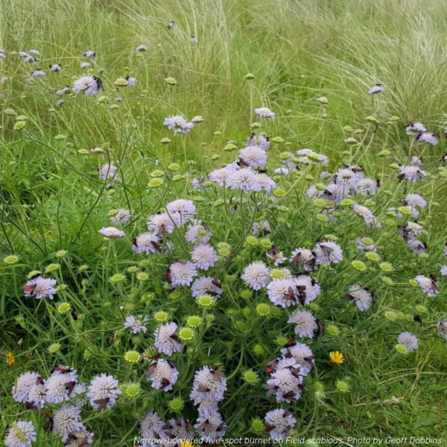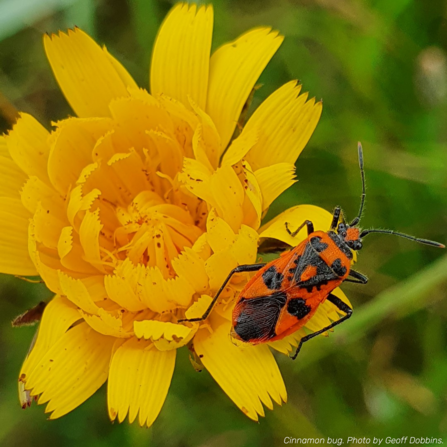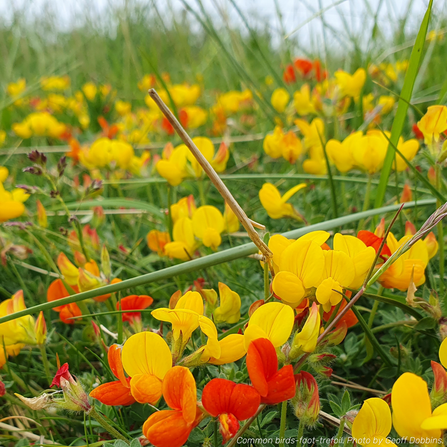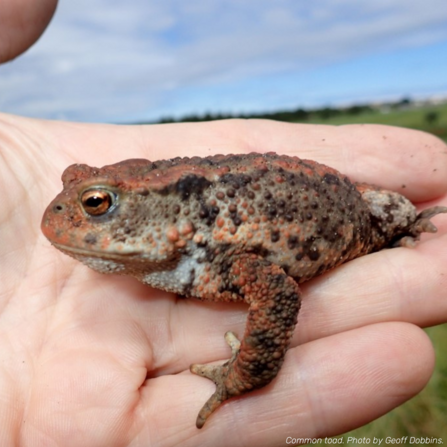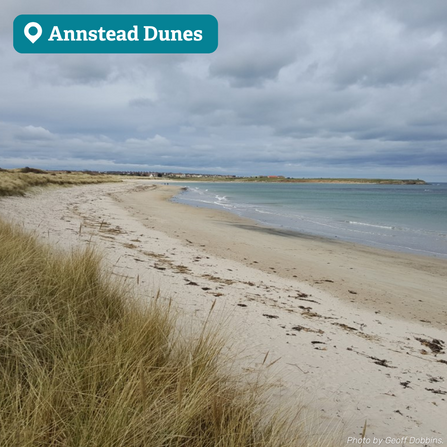
Annstead Dunes. Photo by Geoff Dobbins.
Sitting between Beadnell and Seahouses, the beautiful beach at Annstead offers great views across to the Farne Islands. Behind the beach, the dunes are grazed by Exmoor ponies to encourage stunning displays of wildflowers such Pyramidal Orchid, Restharrow, Bloody Cranesbill & Vipers Bugloss.






